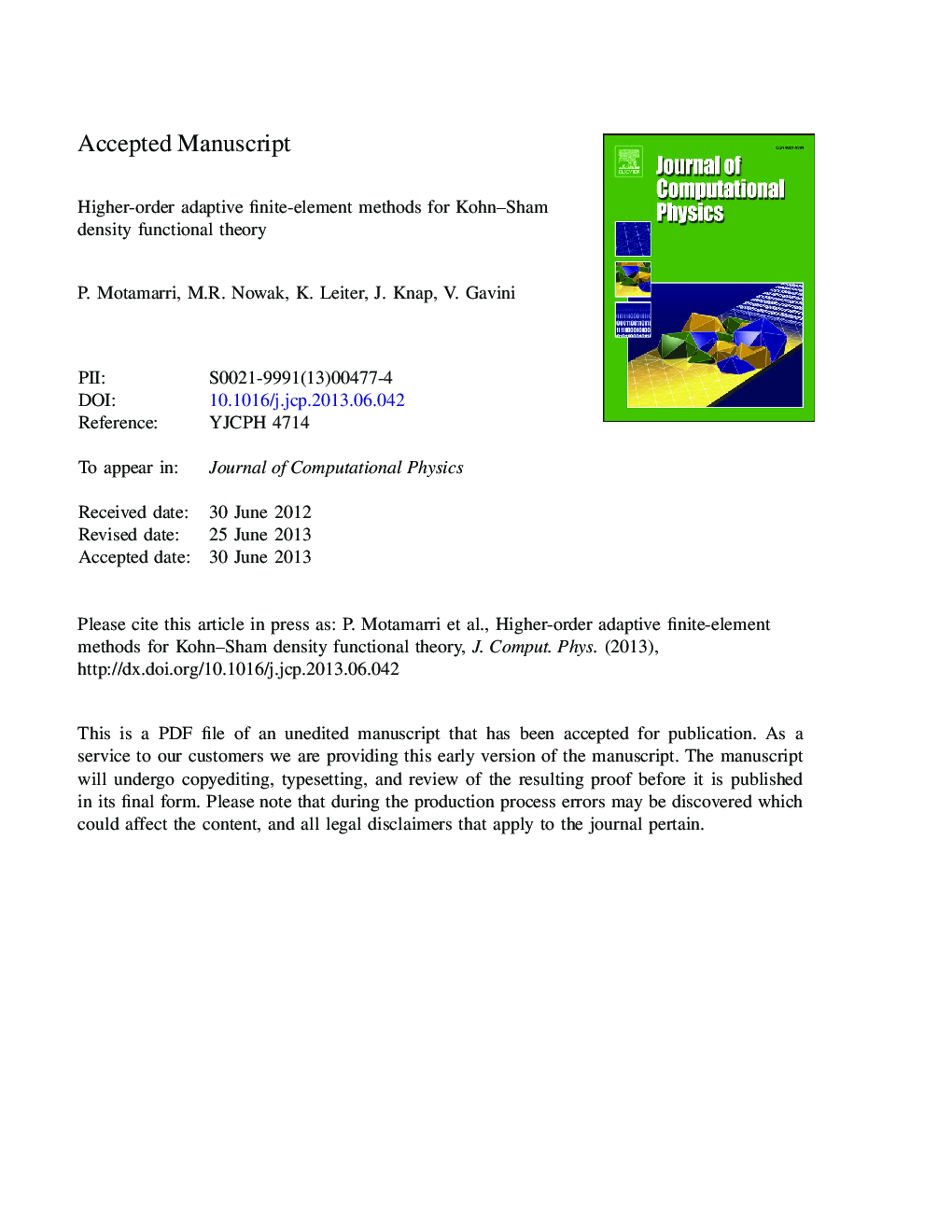| Article ID | Journal | Published Year | Pages | File Type |
|---|---|---|---|---|
| 6933446 | Journal of Computational Physics | 2013 | 55 Pages |
Abstract
We present an efficient computational approach to perform real-space electronic structure calculations using an adaptive higher-order finite-element discretization of Kohn-Sham density-functional theory (DFT). To this end, we develop an a priori mesh-adaption technique to construct a close to optimal finite-element discretization of the problem. We further propose an efficient solution strategy for solving the discrete eigenvalue problem by using spectral finite-elements in conjunction with Gauss-Lobatto quadrature, and a Chebyshev acceleration technique for computing the occupied eigenspace. The proposed approach has been observed to provide a staggering 100-200-fold computational advantage over the solution of a generalized eigenvalue problem. Using the proposed solution procedure, we investigate the computational efficiency afforded by higher-order finite-element discretizations of the Kohn-Sham DFT problem. Our studies suggest that staggering computational savings-of the order of 1000-fold-relative to linear finite-elements can be realized, for both all-electron and local pseudopotential calculations, by using higher-order finite-element discretizations. On all the benchmark systems studied, we observe diminishing returns in computational savings beyond the sixth-order for accuracies commensurate with chemical accuracy, suggesting that the hexic spectral-element may be an optimal choice for the finite-element discretization of the Kohn-Sham DFT problem. A comparative study of the computational efficiency of the proposed higher-order finite-element discretizations suggests that the performance of finite-element basis is competing with the plane-wave discretization for non-periodic local pseudopotential calculations, and compares to the Gaussian basis for all-electron calculations to within an order of magnitude. Further, we demonstrate the capability of the proposed approach to compute the electronic structure of a metallic system containing 1688 atoms using modest computational resources, and good scalability of the present implementation up to 192 processors.
Keywords
Related Topics
Physical Sciences and Engineering
Computer Science
Computer Science Applications
Authors
P. Motamarri, M.R. Nowak, K. Leiter, J. Knap, V. Gavini,
